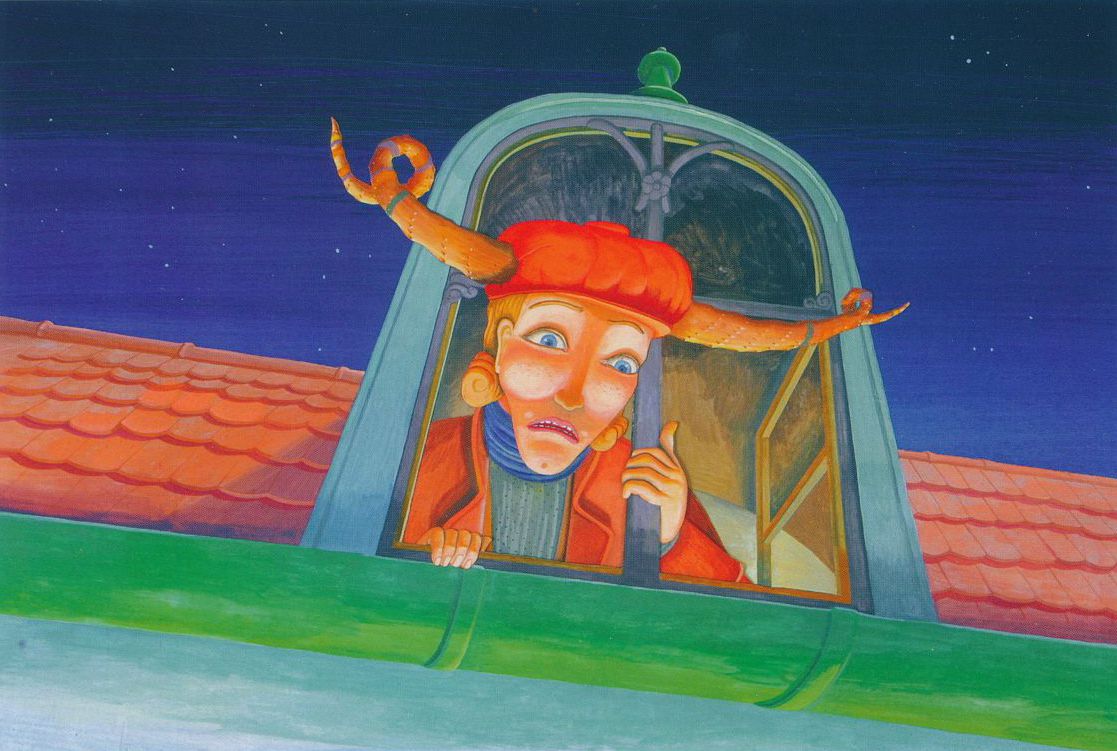Animated film in Slovakia was born in 1965. An independent creative group was established in the Short Film Studio in Bratislava. They planned to make animated films using cartoon and paper techniques.
It was founded by Viktor Kubal (1923-1997), who worked as a screenwriter, artist, animator, and director. He was the creator of the first Slovak animated film, Studna lasky from 1943, filmed at the Skolfilm Institute for Teaching Aids. This is a founding act in animated film in Slovakia. The drawings resemble American animation. The plot follows a legend about a digging of a well at Trencin Castle during the Turkish invasions. In 1945, thanks to Benes's nationalization decree, a film institution was established with a program for the realization of feature documentary and news films, but animated film was not included in this program.

This DVD contains a total of 16 animated films from the 1960s, 70s and 80s. All the most important creators of Slovak animated film history are represented in the selection, as well as all the important creative processes, styles, and poetics that individual animators represent in their work.

At the time of the emergence of Czech animation, young graphic artists and tricksters filmed the collective work Pinguin (1964). Kubal contributed short cartoon shots in a weekly magazine, with the main character, Mr. Hom. Kubal dealt with the environment in the film Earth (1966), whose production belonged to the top of world animation. Television was interested in animation, and so television fairy tales began to be created. Ivan Popovic and Jaroslava Havettova started their work. Together they made the film Socha (1970). A sculptor is looking for a statue in the stone because the famous Michelangelo said that the statue is hidden in every rock. Here, Havettova criticizes dogmatism. The use of symbolism and meanings instead of directness was needed in the works of that repressive time.
The 1970s were a difficult time in society, when engagement was allowed only to a certain strictly defined degree. The animated film, because it worked with visual material, had a more difficult position.

Viktor Kubal in the 1970's
In the seventies and eighties, Viktor Kubal filmed a series Janko Hrasko (1972-1986), influenced by folklore and folk motifs. He used his imagination when he gradually deviated from the film template. The folk hero Janosik appears in the work Zbojnik Jurko (1976), which he was creating for two years. This is a purely original film; folk songs were remade into a film by composer Juraj Lexmann. In the 1970s, Kubal avoids sentimentality, on the contrary, he uses plot shortcuts, is parodic and ironic. Chess (1973) became the best-selling Slovak film. It is a reaction to domestic social relations, where man is depicted as a pawn. The films Kino (1977) and Zebrik (1978) are also politically tuned. He also made the films Prezent (1976) and Jedinacek (1979). We can call Kubal's heroes as children of their time.
The 1980s are the golden period of Slovak animated film. There was an inclination towards socially important topics, which also concerned animation. Important creators in this decade included Jaroslava Havettova (*1942). Compared to Kubal, she was characterized by a different, peculiar poetics.

Her works are characterized by the generalization of moral problems of the individual and society. For example, she explored fatal human situations through pencil, hanger, dresses and matches in Contacts (1980). The film Why We Have Chickens (1986) sounds sharply satirical, where the hero destroys everything living around him and turns to his ego. Udel (1988) is also satirical, made in co-production with a Prague studio, where worked as animators Pavolovov and Kimlicka. It is based on designs by artist Vorlickova, music composed by Dezo Ursiny. It is Havettova's most intense film. The film Napoveda (1984) has a tragicomic effect.

In the mid-1980s, the third generation of creators emerged. They quickly mastered the animation profession. Their main theme was the reflection of the feelings of young people in society and their weaknesses. The most prominent representative was Ondrej Slivka (born 1959) and his film Kdybych byl ptacka (1986). It uses computer graphics and has an ecological character, pointing out the problem of human self-destruction. The film Umbrella (1984) deals with fetishism of technology. The film Celine (1989) deals with bureaucracy.
Viktor Kubal in the 1980's
The film Na prave poledne (1988), referring to the famous western of the same name, is considered a minor masterpiece. It takes place in an office that has run out of ink. Kubal was inspired by cubism in his animation, uses an ironic perspective and criticism of bureaucracy. The politically tuned Idol (1989), in which the hero kicks out a bust of a statesman from a high rock, sounds similar. Here, Kubal begun to cope with the new post-revolutionary reality. Other Kubal works from the 80s are children's works.

1990's
In 1991, the monopoly institution of Slovak film production was abolished, which had major consequences. Only Slovak Television continued to be interested in animated productions. Together with experienced creators they still engaged in productions of fairy tales. Another group of animators worked on commercials and for foreign productions. The generation of creators gradually changed and partnership relations with Czech studios were broken. The established international festivals Danube Prize and Bratislava Animation Biennale are oriented towards children's work.












